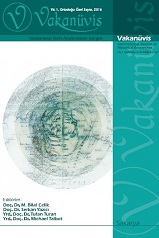Besteci-Viyolonselciler: 18. ve 19.Yüzyıllarda İtalyaFransa-Almanya Örneği
Composers and Cellists: Samples of Italy-France and Germany in the 18th and 19th Centuries
Author(s): Deniz DoğangünSubject(s): Music, 18th Century, 19th Century, History of Art
Published by: Serkan YAZICI
Keywords: Cellist-composer; 18th century; 19th century; Cello; Cello Repertoire;
Summary/Abstract: The Cellist-composer tradition began to appear in the 18th century as a result of a journey that required the musician to discover, in parallel with the musical exploration that helped complete the development of the instrument. The limitation of leading instruments such as the viola de gamba in the developing musical language also paved the way for the preference of the cello. Previously, the composition techniques appeared under the influence of the viola de gamba and started to evolve with the need to overcome itself after earlier discoveries of the violin’s virtuosic capabilities. The cellists-composers compensated this need by composing works that highlighted the cello’s musical and technical range. The most important names of this tradition emerged in Italy, France and Germany, and in the following century they ensured the cello to be among the most soloistic instruments. Towards the end of the 19th century – in the age of great composers- the compositional value of these works seemed inadequate and today only the ones with methodological purposes are included in the pedagogical repertoire.
Journal: Vakanüvis- Uluslararası Tarih Araştırmaları Dergisi
- Issue Year: 5/2020
- Issue No: 2
- Page Range: 703-722
- Page Count: 20
- Language: Turkish

